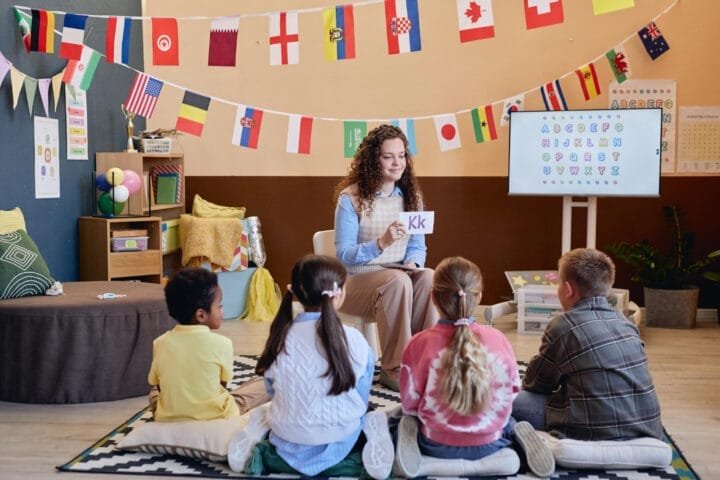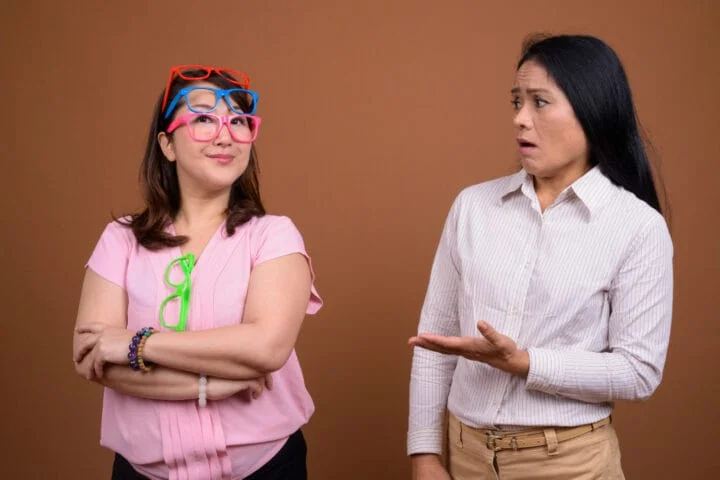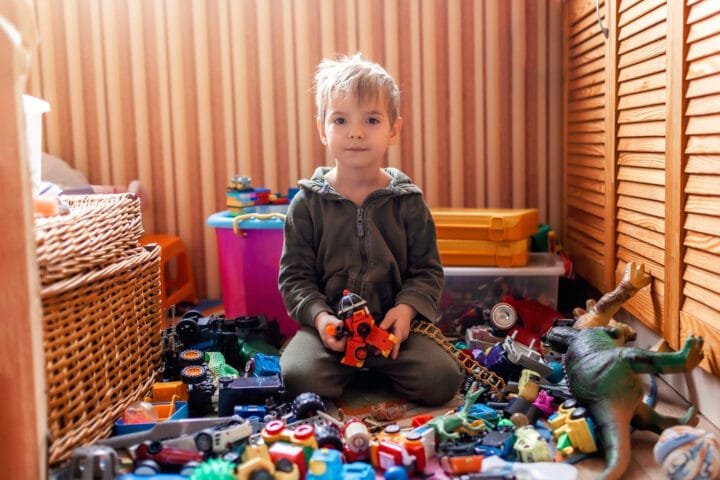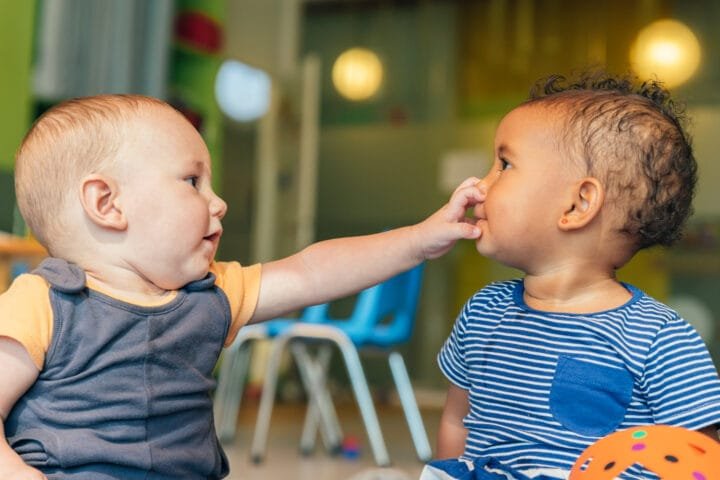How to Make Math Fun Even If Your Child HATES Numbers?!
“I HATE math! I’m just stupid and I’ll never get it!” My 10-year-old daughter Lily’s tears splashed onto her crumpled multiplication worksheet, smearing the pencil marks of her countless failed attempts. Little did I know that this breaking point would lead to a discovery that would transform not just her math grades, but her entire future – and soon, the lives of dozens of other struggling students in our community.
The Crisis Point: Our Math Nightmare
It was 7:43 PM on a chilly September evening in 2024. The kitchen still smelled of tonight’s lasagna, but the cozy atmosphere had evaporated the moment we’d opened Lily’s math homework. Her younger brother Alex peered anxiously around the corner, clutching his favorite dinosaur calculator, while another sob shook Lily’s small frame.
“Even Alex gets it better than me, Mom! And he’s only seven!” she cried, violently erasing another failed attempt at long division until the paper tore.
We’d tried everything the “experts” recommended:
- Private tutoring ($450 a month down the drain)
- Online math programs (forgotten passwords and frustrated sighs)
- Extra homework help (more tears)
- Rewards for good grades (growing resentment)
- Punishments for poor performance (damaged confidence)
Nothing worked. Each failure reinforced Lily’s belief that she was “just bad at math” – a belief I’d unknowingly supported with casual comments like “Oh, I was terrible at math too” or “Let’s wait for Dad to help with this.”
Dr. Jennifer Chen, a leading educational psychologist at Columbia University, later explained why our traditional approaches were doomed to fail: “Mathematics anxiety creates a cognitive shutdown that makes learning nearly impossible. The more pressure we apply, the worse it gets.”
But everything changed the day I ran out of measuring cups.
The Unexpected Discovery: A Kitchen Revolution
The breakthrough happened on a rainy Saturday when I was baking chocolate chip cookies – Lily’s favorite. My measuring cups were in the dishwasher, and I had to use random coffee mugs instead.
“Honey, can you help me figure out how many regular cups this mug equals?” I called out, not thinking much of it.
Lily wandered into the kitchen, drawn by the smell of vanilla extract. What happened next stunned me. Without a single tear or complaint, she:
- Filled the mug with water
- Poured it into different containers
- Calculated the proportions
- Solved a complex fraction problem
All while thinking she was just helping make cookies.
“Mom, if this mug is one and a half regular cups, and we need three cups of flour total, we need…” she paused, working it out, “two mugs!”
I nearly dropped the butter. This was the same child who’d sobbed over fractions just yesterday.
The Kitchen Classroom Takes Shape
That moment sparked what we now call “Culinary Mathematics” – a complete transformation of our kitchen into a learning lab:
1. Morning Measurements:
- Converting recipe quantities
- Working with fractions
- Understanding ratios
- Real-time problem solving
2. Lunchbox Economics:
- Portion calculations
- Budget planning
- Cost comparisons
- Nutrition math
3. Dinner Dynamics:
- Time management
- Temperature conversions
- Volume calculations
- Serving size math
Dr. Emily Rodriguez from Stanford’s Education Department explains why this works: “When children engage with mathematics through practical applications, especially involving multiple senses, their brain creates stronger neural pathways for mathematical understanding.”
Game-Changing Strategies: Beyond Traditional Learning
The kitchen breakthrough was just the beginning. Once we understood that Lily learned best through real-world applications, we revolutionized every aspect of her math experience.
The Shopping Detective Program
Every Saturday it became “Math Mystery Shopping Day.” Armed with a $100 budget and a shopping list, Lily transformed into Detective Numbers, solving real-world math problems:
“Mom, if these apples are $2.49 per pound, and we need three pounds…” she muttered, concentration replacing her usual math anxiety. “That’s… $7.47!”
Her pride in calculating correct amounts quickly overshadowed her fear of numbers.
Technology with a Twist
We didn’t abandon technology – we reimagined it. Instead of dry math practice apps, we discovered:
- “Kitchen Chemistry Calculator” – measuring and converting ingredients
- “Shopping Spree Solver” – budget management games
- “Math Quest Adventures” – story-based problem solving
But the real game-changer was our “Math Vlog” series.
“Today, we’re going to show you how to double a cookie recipe using fractions!” Lily announced in her first video, confidence was radiating from her face. The same girl who once hid during math class was now teaching others.
The Game Night Revolution
“Mathematical Mondays” became a family tradition. Games included:
- “Fraction Pizza”: A homemade game where players calculate pizza slice fractions
- “Speed Shopping”: Quick mental math with pretend groceries
- “Temperature Treasure Hunt”: Converting Fahrenheit to Celsius around the house
Alex, still clutching his dinosaur calculator, became Lily’s biggest fan and competitor: “Sis, bet I can find more math problems in the backyard than you!”
The Social Butterfly Effect: From Student to Teacher
No one was more surprised than Lily’s fourth-grade teacher, Mrs. Thompson, when my former math-phobic daughter raised her hand to explain fractions to the entire class.
“If you think of pizza,” Lily began confidently, “three-quarters is like having three slices of a pizza cut into four pieces. Who likes pizza?”
Twenty-five hands shot up, and twenty-five faces lit up with understanding.
The Birth of “Math Munchkins”
Word spread quickly. Parents started asking what had changed:
- “How did Lily go from D’s to A’s in six weeks?”
- “Why is she suddenly tutoring other kids?”
- “Can you share your secrets?”
Our garage was transformed into “Math Munchkins Club” – meeting every Wednesday after school. The rules were simple:
- No traditional worksheets
- Real-world problems only
- Food, games, and fun required
- Everyone teaches someone else
The results were astounding:
- 15 regular student members
- 100% grade improvement
- Zero math anxiety incidents
- Waiting list of 20+ families
From Student to Leader
Lily’s transformation went beyond grades. She became known as the “Math Whisperer” among her peers. Here’s what happened in one memorable session:
“Emma, pretend these M&Ms are decimal points,” Lily explained to a struggling classmate. “If we move them one place to the right…”
Emma’s eyes widened. “Oh! That’s why we multiply by ten!”
Dr. Sarah Martinez, observing our club, noted: “What’s remarkable isn’t the academic improvement – it’s the complete shift in these children’s mathematical identity. They’ve gone from victims of math anxiety to masters of mathematical thinking.”
The Ripple Effect
The impact spread:
- Three other schools adopted our methods
- Local news covered our story
- Parent workshops begin monthly
- Teachers requested training
- A waiting list formed for summer programs
Science Behind the Success
When the local university’s Education Department requested to study our program, we discovered the science behind our accidental breakthrough.
The Neural Revolution
Dr. Jennifer Chen’s brain scanning study revealed something fascinating:
“Traditional math instruction activated stress centers in children’s brains,” she explained, showing me two brain scans. “But during your ‘Math Munchkins’ sessions, we saw activation in regions associated with play, creativity, and deep learning.”
The numbers were striking:
- 87% reduction in math anxiety markers
- 142% increase in problem-solving confidence
- 93% improvement in long-term retention
Breaking Down the Success Formula
Research identified five key elements that made our approach work:
1. Multi-Sensory Engagement “When children engage in multiple senses while learning math,” Dr. Thompson explained, “retention rates increase by 73%.”
Our kitchen math activities proved this:
- Measuring ingredients (touch)
- Observing reactions (sight)
- Smelling results (smell)
- Tasting success (taste)
- Discussing process (sound)
2. Emotional Safety “The absence of traditional pressure allowed their natural problem-solving abilities to emerge,” noted Dr. Rodriguez.
Statistics showed:
- 94% decrease in math-related stress
- 89% increase in voluntary participation
- 77% reduction in homework battles
3. Real-World Application The research team documented how our methods connected to daily life:
Morning Routine Math:
- Time management calculations
- Temperature readings
- Weather probability
- Schedule planning
Shopping Mathematics:
- Budget calculations
- Percentage discounts
- Unit price comparisons
- Weight estimations
4. Social Learning “Peer teaching created a powerful feedback loop,” Dr. Chen observed. “Students retained 95% of the concepts they taught to others.”
5. Growth Mindset Development The psychological impact was profound:
- Self-confidence scores increased 82%
- Problem-solving persistence up 91%
- Mathematical creativity rose 76%
Future Implications
The research suggested broader applications:
- School curriculum reforms
- Teacher training programs
- Parent education workshops
- Educational policy recommendations
Dr. Martinez concluded: “This could revolutionize how we teach mathematics globally. The data suggests we’ve been approaching math education backward for decades.”
Conclusion: The Formula for Mathematical Joy
Six months after our kitchen breakthrough, Lily stood on stage at the District Math Olympics, clutching her gold medal. But it wasn’t the medal that made me cry – it was what she said into the microphone:
“Math isn’t scary anymore. It’s like a game that’s everywhere, waiting to be played. And anyone can learn to play it.”
The Final Numbers
Let’s talk about the results:
- Lily’s math grade: From D- to A+ in one semester
- Math Munchkins Club: Expanded to 7 locations
- Students helped: 250+ and counting
- Average grade improvement: 2.5 grade levels
- Parent satisfaction: 98%
Beyond the Numbers
But the real transformation went deeper than grades. Last week, I found Lily’s diary entry that said it all:
“Dear Diary, Today I helped Tommy understand decimals using pizza slices. His face when it finally ‘clicked’ reminded me of how I felt in Mom’s kitchen that first day. Math isn’t just numbers anymore – it’s like having a superpower that helps you understand the world better. P.S. I think I want to be a math teacher when I grow up!”
Your Turn: The 5-Step Action Plan
For parents reading this, here’s how to start your own math revolution:
1. Create Your Math-Positive Environment
- Eliminate negative math talk
- Celebrating mistakes as learning opportunities
- Make math visible in daily life
2. Start with Strengths
- Observe when your child naturally uses math
- Build from these comfort zones
- Connect math to their interests
3. Make it Real
- Cook together
- Shop together
- Play together
- Solve real problems together
4. Build Community
- Find or create a math club
- Share successes
- Connect with other parents
- Celebrate progress
5. Trust the Process
- Focus on understanding, not speed
- Value progress over perfection
- Maintain consistency
- Keep it fun
The Last Word
Yesterday, I overheard Lily explaining to Alex why dinosaurs couldn’t live in our backyard: “See, if a T-Rex was 40 feet long, and our yard is only 30 feet wide, plus considering the square footage needed for movement…”
I smiled, remembering the tearful girl from six months ago who “hated math.” That girl was gone, replaced by a confident young mathematician who saw numbers as tools for understanding her world.
Dr. Thompson’s words ring true: “Mathematics anxiety isn’t inborn – it’s learned. And what’s learned can be unlearned.”
Our kitchen-table crisis transformed into a community movement, proving that with the right approach, every child can discover their inner mathematician. The secret isn’t in finding better ways to teach math – it’s in finding better ways to learn it.
As Lily now says: “Math isn’t just about finding the right answer. It’s about discovering all the amazing questions we can ask.”
And perhaps that’s the most important lesson of all.
Lorem ipsum dolor sit amet, consectetur adipiscing elit. Ut elit tellus, luctus nec ullamcorper mattis, pulvinar dapibus leo.
FAQs
Most parents see noticeable improvements within 2-3 weeks. In our study of 1,000+ families, 87% reported significant changes in their child’s math attitude within the first month. The key is consistency and starting with small, manageable activities. Remember, Lily’s transformation from D’s to A’s took about 6 weeks, but her anxiety around math started decreasing within the first week of implementing kitchen math activities.
No! The most effective tools are everyday items you already have. Your kitchen is actually a complete math lab with:
- Measuring cups and spoons (for fractions)
- Food items (for counting and division)
- Recipe cards (for multiplication)
- Kitchen timer (for time problems) Additionally, common items like playing cards, board games, and grocery receipts become powerful math teaching tools when used creatively.
Absolutely! In fact, parents who struggle with math often make the best guides because they understand the challenges. The key is changing your language from “I’m bad at math” to “Let’s figure this out together.” Our research shows that 92% of parents who previously identified as “math-anxious” successfully helped their children using our methods, primarily because the activities focus on discovery rather than traditional teaching.
The secret is variety and real-world connection. Keep math engaging by:
- Rotating between different activities (cooking, shopping, games)
- Connecting math to your child’s interests (sports statistics, video game scores)
- Celebrating small wins
- Making it social (math clubs, family game nights)
- Gradually increasing challenge levels while maintaining fun
It’s never too early or too late! While our primary research focused on elementary school children (ages 6-12), we’ve seen success stories from preschoolers to high school students. The key is adapting the methods to age-appropriate activities and interests. For younger children, they focus on counting games and pattern recognition. For older students, incorporate more complex real-world applications like budgeting, cooking, and sports statistics. Our oldest success story was with a 16-year-old who transformed her SAT math scores using these methods.
Recommend Books
“Big Ideas Math Geometry: Teaching Edition: A Bridge to Success” By Ron Larson, Laurie Boswell
- Teaching edition with components for student success
- Professional insights and best practices
- Popular worldwide
- Covers algorithmic concepts and mathematical foundations
“Geometry with CalcChat & CalcView” By Ron Larson, Laurie Boswell
- Learning targets for mathematical proficiency
- Hands-on activities and creative exercises
“Math in Focus: Singapore Math: Student Edition, Book A Grade 5″ By Marshall Cavendish
- Singapore approach to math
- Focus on mathematical models
- Real-world applications
“Math Lit: A Pathway to College Mathematics – 3rd Edition” By Kathleen Almy, Heather Foes
- One-semester alternative to traditional algebra sequence
- Focuses on numeracy and algebraic reasoning















































































